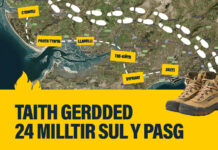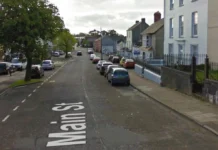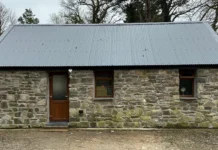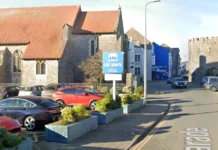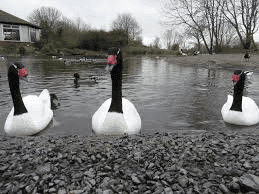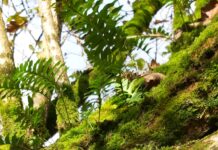That is the warning message from a group of organisations who have come together to sound the alarm over habitat loss.
The Wildfowl & Wetlands Trust (WWT) has joined forces with North Wales arts organisations Migrations and Soundlands to turn up the volume and highlight the risks posed by the reduction of wetland areas and the subsequent potential consequences for humans and wildlife.
Working with internationally acclaimed Netherlands artist Bouke Groen, an art installation – The Bell – will be placed at WWT Llanelli Wetland Centre throughout the summer. Encased in glass, a muffled church bell will toll for visitors and encourage them to think differently about environmental concerns. Wetlands are valuable ecosystems, full of biodiversity and providing homes for both endangered species and people. But wetlands are disappearing at a rate three times faster than forests, ringing alarm bells for conservationists.
Dr Brian Briggs, WWT Llanelli’s Reserve Manager, said: “Wetland areas are being squeezed and squeezed. If you rewind 1,000 years, then areas like ours would have been home to elk, wild cattle and horses. There is a wider story here too. Over the last 400 years, there has been a 90 per cent decline in UK wetlands. Wetlands need our protection, and we hope that our summer visitors will hear The Bell and understand that we can’t ignore the warning. The Bell is a dampened alarm, a metaphor for the signals we need to hear about the implications of climate change, environmental issues, and biodiversity loss.”
Artist Bouke, who has showcased his work around the world, designed the concept and will be using local trades to help make the installation. Glass cubes have been crafted by a company near to the site and the old brass church bell was found at a reclamation site on the England/Wales border.
Bouke said: “Bells marks a moment in time, be it for funerals, weddings, and gatherings. They have also been used to alert people to danger or to bring people together. Climate change is often subjective, some people will say it still snows in winter and the sun still comes out in summer. But there was more wildlife ‘noise’ in wetlands areas in the 1970s and 1980s than now, so something has changed. By dampening the sound, people have to think: is the danger near or far away? Is the threat close to them as they stand next to The Bell, or is it far away as the noise is muffled? Ultimately, The Bell raises the questions of how we deal with significant issues, whatever they might be.”
Soundlands and Migrations are Welsh not-for-profit organisations working to make positive contributions to communities through sound art, bringing international contemporary arts to Wales through innovative collaborations, commissions, and partnerships.
Karine Décorne, Artistic Director of Migrations, said: “The Bell will chime every seven minutes – in that time 12 birds will have vanished from the British countryside, 1,000 hectares of wetlands will have been lost worldwide, and 7,000,000 plastic bottles will have been purchased. These are messages which we all need to hear.
“During the time The Bell is on site, guided walks will be run by volunteers who will share our inspiration, aims and messages with visitors. It may seem an unusual setting for an art installation, but the WWT was set up by artist and ornithologist Sir Peter Scott, so there is a natural link between the arts and WWT.
“Wetlands are economically viable and valuable ecosystems and we depend on them for many things, including coastal protection. We ignore their decline at our peril, which is what The Bell is warning us about.”
The Bell will be in place from June 8 and will stay at the 450-acre site, a haven for some of the world’s most spectacular birds and other wetland species, until mid-August. This, says Soundlands’ Dominic Chennell, will give plenty of people the chance to be inspired by the installation.
He added: “The Bell is an innovative and thoughtful sound artwork, conceived specifically for the beautiful WWT Llanelli environment but addressing much wider concerns. Bouke’s piece stood out as a simple but significant concept. I’m really looking forward to seeing it in the amazing wetlands landscape.”
The Bell will be at the WWT Llanelli Wetland Centre from June 8 until August 11 and the site is open to visitors Monday-Sunday, 9.30am-6pm. Volunteer-led walks will be held on Wednesdays, Saturdays and Sundays at noon with self-guided walks available throughout.
Help keep news FREE for our readers
Supporting your local community newspaper/online news outlet is crucial now more than ever. If you believe in independent journalism, then consider making a valuable contribution by making a one-time or monthly donation. We operate in rural areas where providing unbiased news can be challenging. Read More About Supporting The West Wales Chronicle












